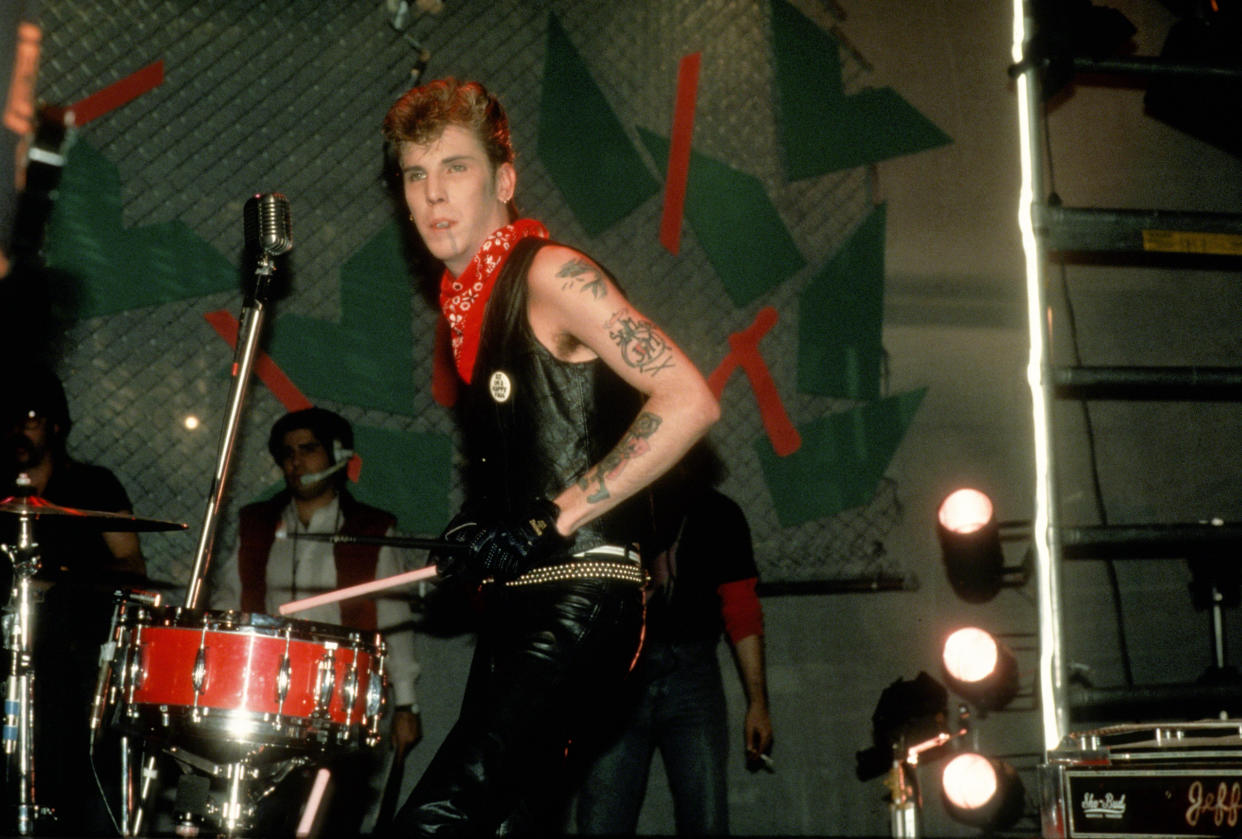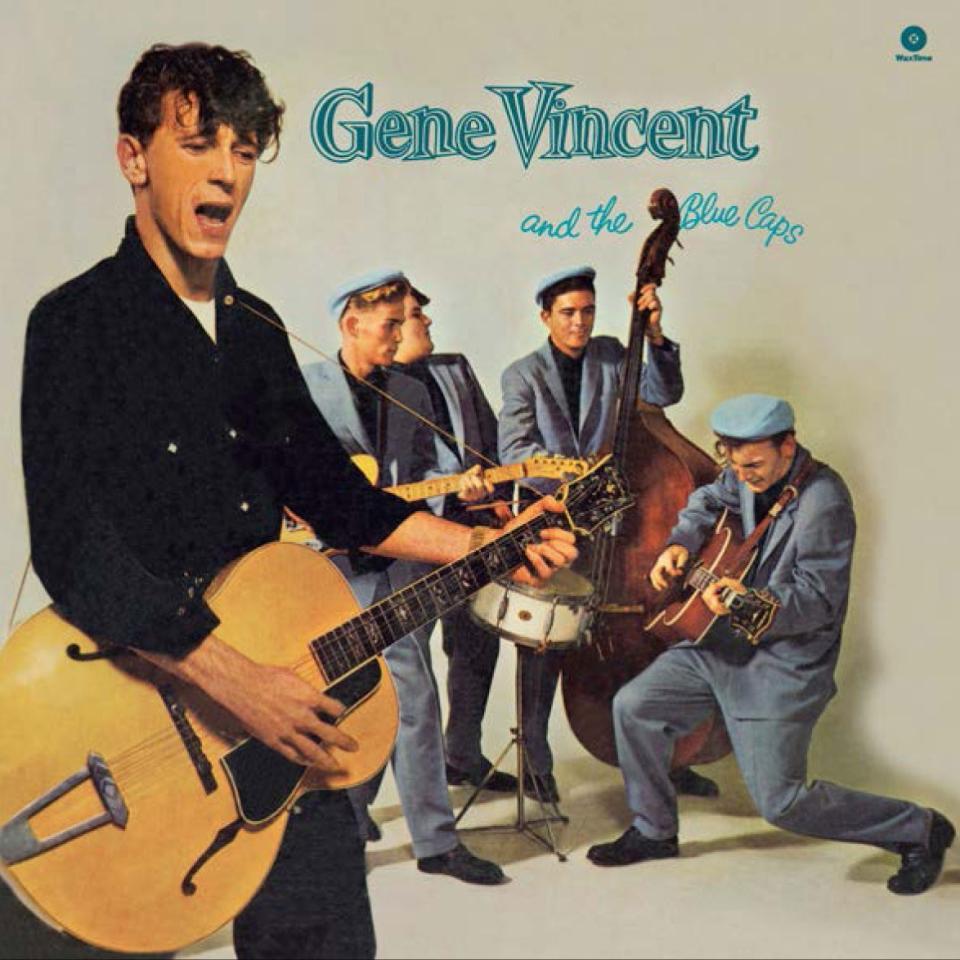Amusing inspiration behind Stray Cat Slim Jim Phantom's drumming: 'My whole life has been based on a blurry photograph'

In the late ’70s/early ’80s, Generation X people discovered the music of their parents’ Boomer era via a Grease, or Happy Days, or maybe even via Sha Na Na’s campy variety show. But way cooler than any of that were the Stray Cats. The Long Island rockers cut their teeth in punk clubs like CBGB and Max’s Kansas City, became unlikely MTV darlings alongside British new wavers like Culture Club and Duran Duran after moving to the U.K., and made the 1950s hep all over the world, all over again. Their top 10 hit “Rock This Town” even ended up in the Rock and Roll Hall of Fame as one of the “500 Songs That Shaped Rock and Roll,” right next to tunes by their own ‘50s heroes.
And now, three-plus decades later, young music fans are once again discovering 1950s rockabilly … via, yes, the Stray Cats. “They had like national flags — like, the Brazilian flag was draped, the Swedish flag was draped. They were representing all the countries, like in the Olympics,” marvels Stray Cats drummer Slim Jim Phantom, recalling the audience at the trio’s first concert in 10 years, which took place last April at the Viva Las Vegas Rockabilly Weekend. (The Stray Cats also have two Southern California gigs lined up this month, coinciding with their 35th anniversary of their second U.S. studio album, Rant ‘n’ Rave With the Stray Cats.) “And it was all young people; it wasn’t crusty guys like us! It was all kids.”
Guitarist Brian Setzer, stand-up bassist Lee Rocker, and stand-up drummer Phantom bonded as kids themselves over their shared fascination with ‘50s culture (“It was a gas, really … We had pink jackets, black-and-white shoes, big gold-fleck jackets — and we walked around that way in Massapequa!”), poring over vintage album credits trying to learn the identities of “C. Berry” and “C. Perkins” and “B. Holly.” And one special album discovery actually inspired Phantom’s unique, pioneering stand-up drumming style — although Phantom didn’t learn the entire, amusing story behind that album’s cover art for many years.
“My whole life has been based on some blurry photographs on the back of a few albums,” Phantom chuckles. “So one of the records, the greatest record ever, is Gene Vincent and the Blue Caps. And Dickie Harrell was the drummer who did the screams on ‘Be Bop-a-Lula.’ He was 15, and he was my hero. We saw him standing up. … So we had the idea, we experimented. And then, years later, I met Dickie Harrell and I told him the story: ‘We saw your photograph and it inspired me!’ And he had a little bit of a laugh. I said, ‘What are you laughing at, man?’ He said, ‘Oh, I only did that in photographs.’ So, yeah — and I based my whole life on playing like that!”

However Phantom came up with the idea, his cocktail drum kit (a spare setup comprising a bass drum, snare drum, hi-hat, and crash cymbal) was one of many things that made the Stray Cats stand out in the ’80s — especially when they hit England in search of a record deal. Ironically, the band initially relocated across the pond mistakenly thinking London was already home to a thriving rockabilly scene. (This was due to an article on Teddy Boys they’d seen in a “yellowed, 9-month-old copy of NME. …We were like, ‘Let’s go to England, everyone looks like us there!’”) But this was yet another misunderstanding that worked out for the best: The Stray Cats received a warm welcome overseas, eventually creating their own scene.
“We were thinking airline pilot was gonna be Ricky Nelson or something,” Phantom laughs, recalling the trip. “So we wound up in England, kind of homeless. But we kicked around, met people, finally got a few gigs — four sets a night, five nights a week, for about a year and a half. There was a big connection in England. They love all the [’50s] stuff: Cadillacs with horns on the front, jukeboxes, Elvis Presley, James Dean … American rock ‘n’ roll and their version of what they thought the ’50s were like in America. So [the Brits] embraced us.”

Phantom — who currently hosts the Rockabilly Rave Up show on the SiriusXM channel Little Steven’s Underground Garage, and ran famous Sunset Strip joint the Cat Club (a haven of who’s-who jam sessions) for two decades — has since parlayed his love of classic rock ‘n’ roll into collaborations with everyone from the late Lemmy Kilmister (in all-star rockabilly band the Head Cat), Joe Strummer, and Johnny Ramone, to Bowie axeman Earl Slick, Guns N’ Roses’ Gilby Clarke, the Damned’s Captain Sensible, and even Jerry Lee Lewis. He’ll soon be heard on the debut solo album by original Sex Pistols bassist Glen Matlock. And Phantom still loves playing his stand-up drums for “15,000 kids, everyone with grease in their hair” at the Stray Cats’ reunion concerts, introducing rockabilly to new generations.
“[The rockabilly scene] is a population that repopulates,” Phantom says. “These young people want something real … and I’m happy to help forward this fun lifestyle.”
Audio of this conversation is available on demand via the SiriusXM app, on Volume channel 106.
Read more from Yahoo Entertainment:
How Drake Bell went from a backstage-crashing Brian Setzer fan to a collaborator
Get back to me: The totally new wave legacy of ‘Square Pegs’
DJ Fontana: Drummer who was the driving beat behind Elvis Presley
Follow Lyndsey on Facebook, Twitter, Instagram, Google+, Amazon, Tumblr, Spotify

